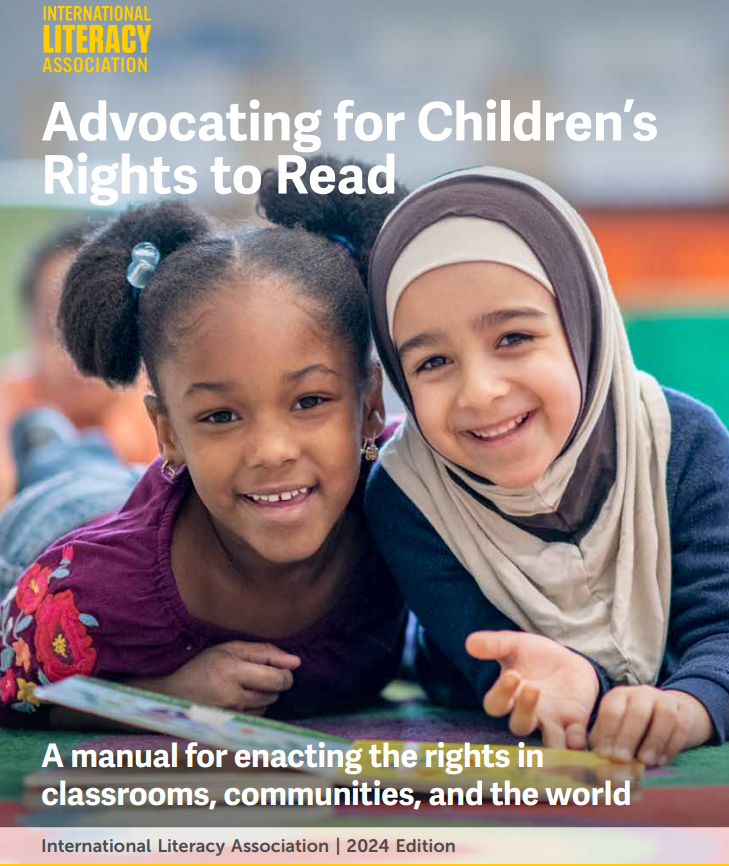With Greater Urgency Around Children’s Right to Read, the International Literacy Association Reissues Advocacy Measures
With rampant book banning in the U.S., the ILA has updated its guide, Advocating for Children's Right to Read, with action items for stakeholders, from teachers and school and public librarians, to administrators and policy makers.

The International Literacy Association (IRA) has updated its manual, Advocating for Children's Right to Read.
A free publication available in 16 languages, the guide was first published in 2018, coinciding with a related campaign underscoring 10 fundamental rights of children. Those include the right of children to choose what they read and to access “texts that mirror their experiences and languages, provide windows into the lives of others, and open doors into our diverse world.”
The updated advocacy kit features customizable templates for taking action, each geared for specific stakeholders, from teachers and reading/literacy specialists; administrators; and policymakers, to school and public librarians; families and caregivers; and new this year: instructional coaches.
Among items listed in the Librarian Action Plan:
- Advocate for library needs during the school/town budget cycle
- Evaluate my collection for diversity by __________ (date)
- Create a section of the library stocked with books that are frequently banned or challenged
While the campaign remains global in scope, ILA foregrounds rampant book banning efforts in the U.S. as a catalyst. Leading with “the alarming 33% increase in U.S. public school book bans,” citing American Library Association and PEN America statistics, the introduction states: "This updated guide empowers adults in various roles to become literacy advocates and guardians of children’s rights. Use this manual for self-reflection to improve your own practice and inspire others to do the same.”
The full release below:
|
INTERNATIONAL LITERACY ASSOCIATION RELEASES 2024 EDITION OF CHILDREN’S RIGHTS TO READ ADVOCACY MANUAL NEWARK, Del. (September 9, 2024) — In recognition of International Literacy Day, the International Literacy Association (ILA) announced today the next phase of its Children’s Rights to Read campaign, an initiative that continues ILA’s mission of promoting equitable access to literacies among individuals of all ages and diverse communities as a basic human right and a matter of social justice. Children’s Rights to Read—which advocates for every child, everywhere, to have access to the education, opportunities and resources they need to read and be successful—was first launched in 2018. The list of 10 rights, including the right to diverse texts that offer opportunities for students to see authentic versions of themselves and others and the right to extended time set aside for reading, has been translated into 16 languages and has inspired similar campaigns around the world (such as the European Declaration of Digital Literacy as a Basic Right of Children). This new phase—anchored by a 2024 edition of ILA’s Advocating for Children’s Rights to Read manual—aims to reignite global engagement with an emphasis on small-scale advocacy efforts. The manual provides actionable strategies for a range of audiences—everyone from classroom teachers and reading specialists to librarians and policymakers. The included “Take Action” planning templates encourage literacy partners at all levels to look at what steps they can take to become even more effective advocates for children’s rights in their communities. “The Children’s Rights to Read initiative underscores our commitment to literacy as a fundamental human right and also empowers communities to take meaningful action in support of every child’s right to read,” said J. Helen Perkins, president of ILA’s Board of Directors and professor emerita of literacy at University of Memphis in Tennessee. “I am deeply committed to strengthening ILA's advocacy efforts, and the Children’s Rights to Read campaign is a perfect example of how we can make a significant impact.” In addition to the manual, ILA has reintroduced a pledge to support Children’s Rights to Read, inviting educators, policymakers, literacy advocates and community members to reaffirm their commitment to the 10 fundamental rights. To expand the campaign’s reach, signers are also invited to take the pledge and manual directly into their schools, communities and professional networks. Activating these signers as volunteers will play a crucial role in advocating for and protecting Children’s Rights to Read at the grassroots level. “We are thrilled to bring new energy to our Children’s Rights to Read campaign,” said Nicola Wedderburn, executive director of ILA. “Literacy is the cornerstone not only of education but also of equity and social justice, and our renewed efforts will empower educators and advocates to work toward a world where every child can exercise their right to read.” To learn more about Children’s Rights to Read or how to get involved, visit: literacyworldwide.org/rightstoread |
Add Comment :-
RELATED
The job outlook in 2030: Librarians will be in demand
The job outlook in 2030: Librarians will be in demand
ALREADY A SUBSCRIBER? LOG IN
We are currently offering this content for free. Sign up now to activate your personal profile, where you can save articles for future viewing





